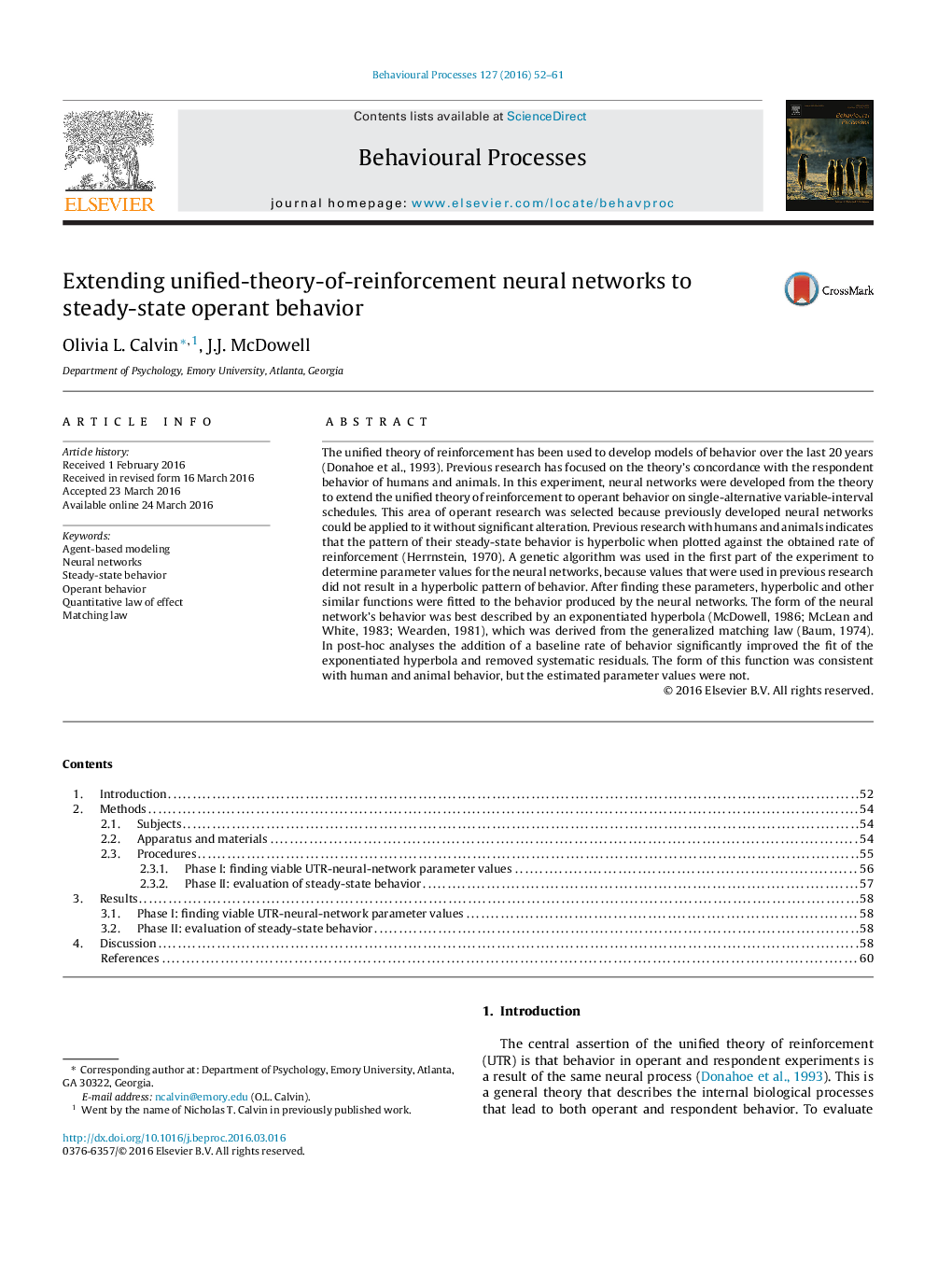| کد مقاله | کد نشریه | سال انتشار | مقاله انگلیسی | نسخه تمام متن |
|---|---|---|---|---|
| 2426436 | 1553153 | 2016 | 10 صفحه PDF | دانلود رایگان |
• We review the unified theory of reinforcement and its model implementations.
• We extend the unified theory of reinforcement to behavior on single VI schedules.
• We implemented a genetic algorithm to find optimal parameter values.
• We determine that the model behavior is well described by the quantitative law of effect.
• We discover differences between model behavior and human and animal behavior.
The unified theory of reinforcement has been used to develop models of behavior over the last 20 years (Donahoe et al., 1993). Previous research has focused on the theory’s concordance with the respondent behavior of humans and animals. In this experiment, neural networks were developed from the theory to extend the unified theory of reinforcement to operant behavior on single-alternative variable-interval schedules. This area of operant research was selected because previously developed neural networks could be applied to it without significant alteration. Previous research with humans and animals indicates that the pattern of their steady-state behavior is hyperbolic when plotted against the obtained rate of reinforcement (Herrnstein, 1970). A genetic algorithm was used in the first part of the experiment to determine parameter values for the neural networks, because values that were used in previous research did not result in a hyperbolic pattern of behavior. After finding these parameters, hyperbolic and other similar functions were fitted to the behavior produced by the neural networks. The form of the neural network’s behavior was best described by an exponentiated hyperbola (McDowell, 1986; McLean and White, 1983; Wearden, 1981), which was derived from the generalized matching law (Baum, 1974). In post-hoc analyses the addition of a baseline rate of behavior significantly improved the fit of the exponentiated hyperbola and removed systematic residuals. The form of this function was consistent with human and animal behavior, but the estimated parameter values were not.
Journal: Behavioural Processes - Volume 127, June 2016, Pages 52–61
